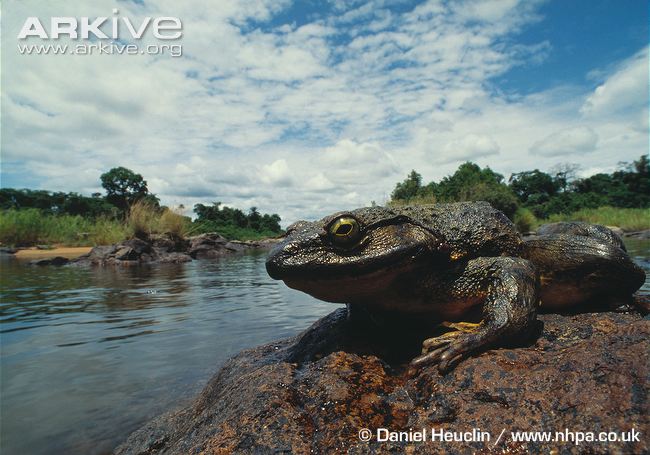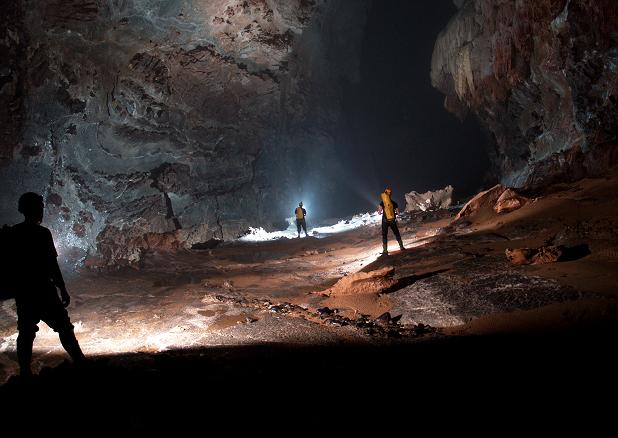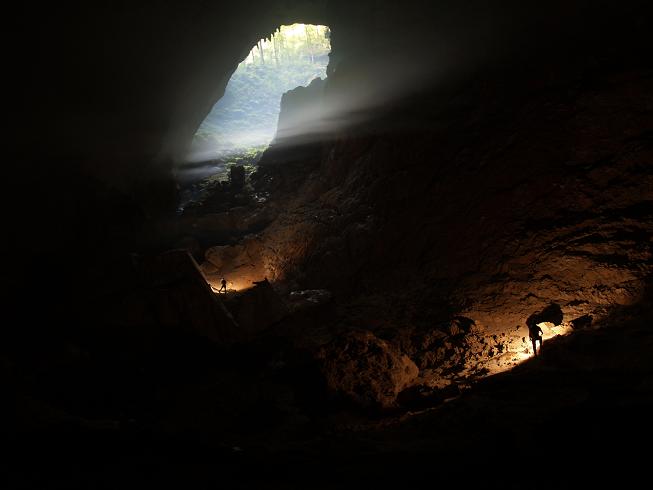Almost half a century back, in 1954, in the remotes and dense jungles of Angola, Jose (Joseph) Fenykovi first saw the track of largest animal ever recorded in human history. It was an unbelievably big elephant track by the muddy shore of a lake.
Joseph Fenykovi, Hungarian-born resident of Spain, was an engineer and big game hunter. Every Year, Fenykovi and his wife would abandon Europe and take off for their 1,000-acre ranch in Angola to start their big-game sport spanning for three months.
It was Fenykovi’s sixth expedition to Africa when he first discovered the huge elephant track. When he measured the track, it came out to be 3 feet, a foot bigger than the largest elephant trophy recorded till date. At that moment he knew I knew that he was looking at the spoor of probably the biggest animal living on the surface of the earth. But due to lack of inventory and other resources he left that expendition without chasing that big monster.
On Novemeber 1955, Jose Fenykovi returned to Angola with all inventory to chase the never before-hunt game. On November 9, Fenykovi reached the same lake where he had seen the footprints last year. On 12th of November, they found a real big track around three feet in diameter. Thery were lucky to trace the elephant exactly a year later at the same place.
Finding the track of the biggest living land animal in the planet, Fenykovi didn’t delay chasing the same. Within hours his team chased the Elephant along with another large bull.
In Fenykovi’s word, “They were quite calm, lolling under some tall trees, slowly moving their huge ears in a fanlike motion. The smaller was an enormous beast, but my elephant was beyond my imagination. A real monster.”
In no time the hunters charged both the bulls. Six bullets from .416 Rigby was not enough to submit the largest elephant. Both the elephants ran away in moments from the view of the hunters.

Jose Fenykovi after killing the Largest Elephant
Fenykovi penned down these last moments of falling his elephant like this: “Before the echo of our shots died away, pandemonium started in the jungle. The crash and cracking of broken trees and branches sounded like an artillery battle. We did not stop to listen, but turned and ran as hard as we could for open country. Deep in a jungle was no place to be with two injured elephants you could not see and with a variable wind that could give our position away at any moment.
When we got 50 yards outside the thicket, we turned and waited for the chase. The wind by now was at our backs, carrying our scent straight to the great beasts. But the attack did not come. Inside the jungle the crash and tear of trees continued. We started to run around the thicket, which was fortunately small- about a mile and a half in circumference—keeping a good 50 or 60 yards from the edge of the forest.
This way we reached the place where we had left our jeep. I saw, to my astonishment, not 10 feet from the jeep the bloody tracks of the big elephant. He had passed the jeep only a few seconds before.
A little way from the jeep we found the tracks of the smaller beast who had taken off in the opposite direction from his larger companion. Fortunately for us, the two monsters had separated and now the job was not quite so dangerous. We had only one elephant at a time to worry about and he (the big one) had six .416 bullets and one from the .375 in his vitals.
We followed his trail through low bushes for a good three miles. Two or three times we got close enough to see him, but not in time for another shot. Finally the bloody trail entered another wooded thicket. Now we could not miss it even if we were blind. It was 4:30 p.m. Mario and I stopped with the jeep at the edge of the jungle. Francisco and Kukuya lunged into the thicket like a couple of bloodhounds on the scent. They had orders to locate the beast and call us. Mario and I both thought that with seven heavy-caliber bullets in him, losing blood and winded from a hard six-mile run in terrific heat, our elephant could not last much longer.
We waited for 20 minutes, and there was no word from Francisco and Kukuya. Mario asked me if he could go in to look for them. I hesitated. I thought we should both go. I like to finish off my trophies myself. But I was at the end of my endurance, after having been on the go since 5 a.m. Mario, who is 20 years younger than I am, argued that if we did not finish him off quickly it would soon be too dark to follow him, and then we might lose him altogether. I told Mario to go ahead. He disappeared like a cat into the jungle. Taking up a stand by the jeep facing the trees, I prepared to defend myself if the elephant should charge.
I waited a little over half an hour, growing ever more impatient but knowing it would be folly for me to go into the jungle alone. This was probably the hardest part of the whole thing – the waiting. All of a sudden I heard a shot from the .416, followed by another, and then two more: altogether four shots in rapid-fire succession. Afterward there was complete silence.
It did not surprise me that Mario had used four shots to finish off the beast. A fallen elephant can be one of the most dangerous animals in the world. There are many cases recorded in the history of big-game hunting when an elephant, knocked down and apparently dead, has suddenly got to his feet, or even without rising has killed the unwary hunter with a convulsive sweep of his trunk.
I awaited the arrival of one of the trackers with news. Instead, after about five minutes, I heard two more shots from the .416 and three from the smaller rifle. That surprised me, and I began to worry over having let Mario go in alone. I could hardly believe that the elephant, with six bullets of 400 grains each from the .416 and one 300-grain bullet from the .375 in him, had needed six more from the big gun and three from the smaller one to finish him off.
Finally, Kukuya burst out of the jungle running and, as he got within earshot, he gave voice to the brief but electrifying announcement:
Fallen!
There the enormous elephant lay on his side, amidst the carnage of blood, broken trees and trampled brush that had marked his last struggles. When I let my eyes roam over his vast expanse I could hardly believe that any animal could be so big, and I understood why it had taken so many heavy-caliber bullets to finish him off.I must confess the shock we got when I put the tape across my elephant’s foot and found that it measured, instead of the three feet of the spoor we had been following all day, only a little over two feet. The measurement was still a world record, but it was a foot short of the track size I had first noted a year before beside the lake. When we began to examine the body, we soon understood why: Besides the 16 bullets from our own rifles, we found a strange slug embedded in the left front leg. It was not a modern bullet, but a piece of iron shot, the kind used in old muzzle-loading flintlock rifles. It had crippled him in the left front leg, so that the step he took with that foot was shorter than normal. As the animal ran, the left hind foot partially superimposed its print over the front one, making it look much bigger than it actually was. ”
Fenykovi’s record of the Elephant which broke the previous record of Lawrence G. Thaw was like this:
Height From ground to withers, 13 feet 2 inches. (Thaw’s elephant: 12 feet 2 inches.)
Length From trunk tip to tail tip in straight line, 27 feet 6 inches; whole skin from trunk tip to tail tip, 33 feet 2 inches.
Length of feet Front, 2 feet; rear, 2 feet 1 inches. (Thaw’s elephant: one foot 9 inches, which foot not specified.)
Circumference of feet Front, 5 feet 7 inches; rear 5 feet 2 inches.
Circumference of body At widest point, 19 feet 8 inches.

Fenykovi's kill still preserved in the National History Museum
On March 6, 1959, Joseph J. Fenykovi gifted the elephant parts to the National Museum of Natural History. it is still in the display and is the land animal ever hunted.
At that time, Fenykovi probably never realized that within few years this animal will become endangered. None would like to kill such a gigantic gift of nature in today’s date. Its so precious to keep such wonders alive!











Recent Comments